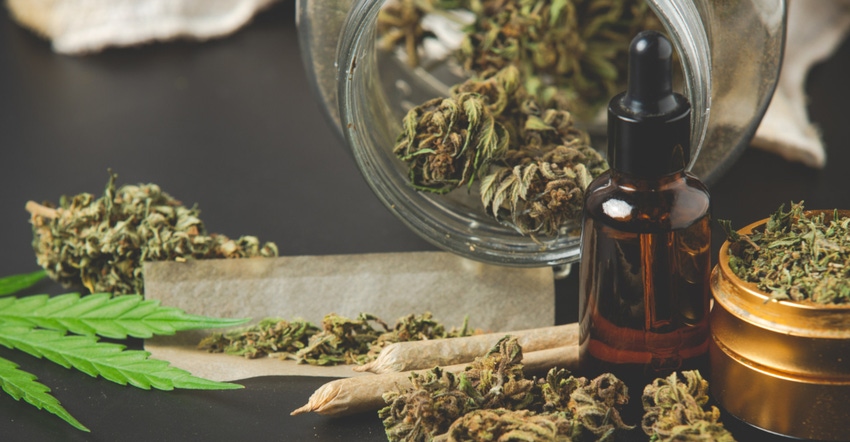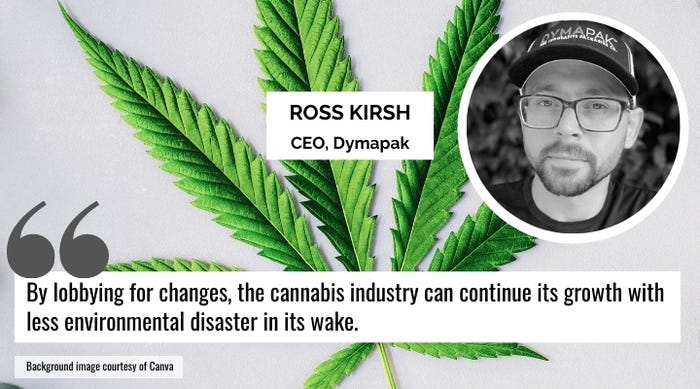Safety regulations call for single-sale child-resistant packaging. But cannabis products could prevent a lot of packaging waste if they could be reusable and contain recycled content. Let’s work on changing this.

The cannabis industry has a waste problem. Every product made, sold, and consumed is contributing to ocean pollution, which in 2010 was estimated to be 8 million metric tons of plastic. A major contributor to that staggering statistic is single-sale plastic packaging, which is highly prevalent in the cannabis industry (along with pharmaceuticals). This is due to strict contamination and purity regulations, and is compounding an already serious environmental crisis.
But the biggest sustainability issue currently facing this impossibly fast-growing industry is the regulations themselves.
To achieve the highest-quality product and reduce contaminants, many countries and states, including the United States, have regulations restricting or prohibiting the reuse of pharmaceutical containers. This means that every product sold requires its own child-resistant package — typically one-time use, sometimes reclosable — depending on individual state regulations. This leaves us with the unintended consequence of more packaging than we’d like.
Two major factors contribute to the problem:
1. The need to ensure the safety and quality of the product (from contamination, mold growth, pests, or improper handling).
2. The need for “seed-to-sale” traceability and compliance, which is the requirement for cultivators, processors, and distributors to track the product at every step in the production process, from seed to sale. There are significant labeling requirements for this (product names, license number, batch or lot codes, allergens, net quantity, cannabis facts, warning statements, and state-issued THC warning logos). So keeping everything in individual one-time-use containers makes this arduous process much easier.
When current regulation mandates greater packaging volume, the increased costs put pressure on price. Low-cost solutions enter the market, and in almost all instances, the solution is a non-recyclable product from a non-sustainable company.
Regulatory red tape and dubious low-cost solutions create a hazardous cycle. Executives, company founders, and, yes, even consumers, must do better. We need to fight for cleaner regulatory practices that can lead to greater sustainability across all the many businesses working side-by-side with cannabis, including agriculture, manufacturing, and my industry, packaging.
One beneficial trend — and a step in the right direction — is regulating the materials and design of containers to use post-consumer recycled (PCR) plastics. In fact, the regulatory body overseeing cannabis sales in Quebec (Quebec Provincial Cannabis Distributor) released revisions to its packaging regulations at the beginning of August 2021 requiring companies to use packaging that meets certain criteria including incorporating PCR resins in the container. Each of the individual US state regulatory bodies should adopt similar provisions for their own regulations.
In an ideal world, we should be able to use the current safety requirements as a catalyst to reduce pollution through a focus on collecting and repurposing the millions of tons of plastic packaging waste already in existence.
Regulatory changes are crucial to mitigating long-term environmental damage. Industry players need to be intimately aware of their product life cycle and understand the sustainability impact of every decision they make. By lobbying for changes, the cannabis industry can continue its growth with less environmental disaster in its wake.

Without any federal regulation, we are faced with a patchwork of regulations and regulatory bodies that vary by state. The most direct action everyone can take to support short-term change is to contact your state’s regulatory body. In Colorado, for example, this is the Marijuana Enforcement Division.
Several other organizations people can support, both inside and outside of the cannabis industry, are trying to establish standards for states to use as guidelines or are actually lobbying to shape future federal legislation. One is the cannabis committee at the ASTM, a global standards setting organization that is now working on standards for nearly every facet of cannabis: from cultivation to transportation to testing and more. Another organization, NCIA, is a trade association which, among many other things, organizes annual DC lobbying trips, setting up meetings with senators on Capitol Hill over several days.
In the long term, organizations like these will certainly be the most significant way to enact change, but our impact will be limited until federal legislation is passed.
About the Author(s)
You May Also Like




